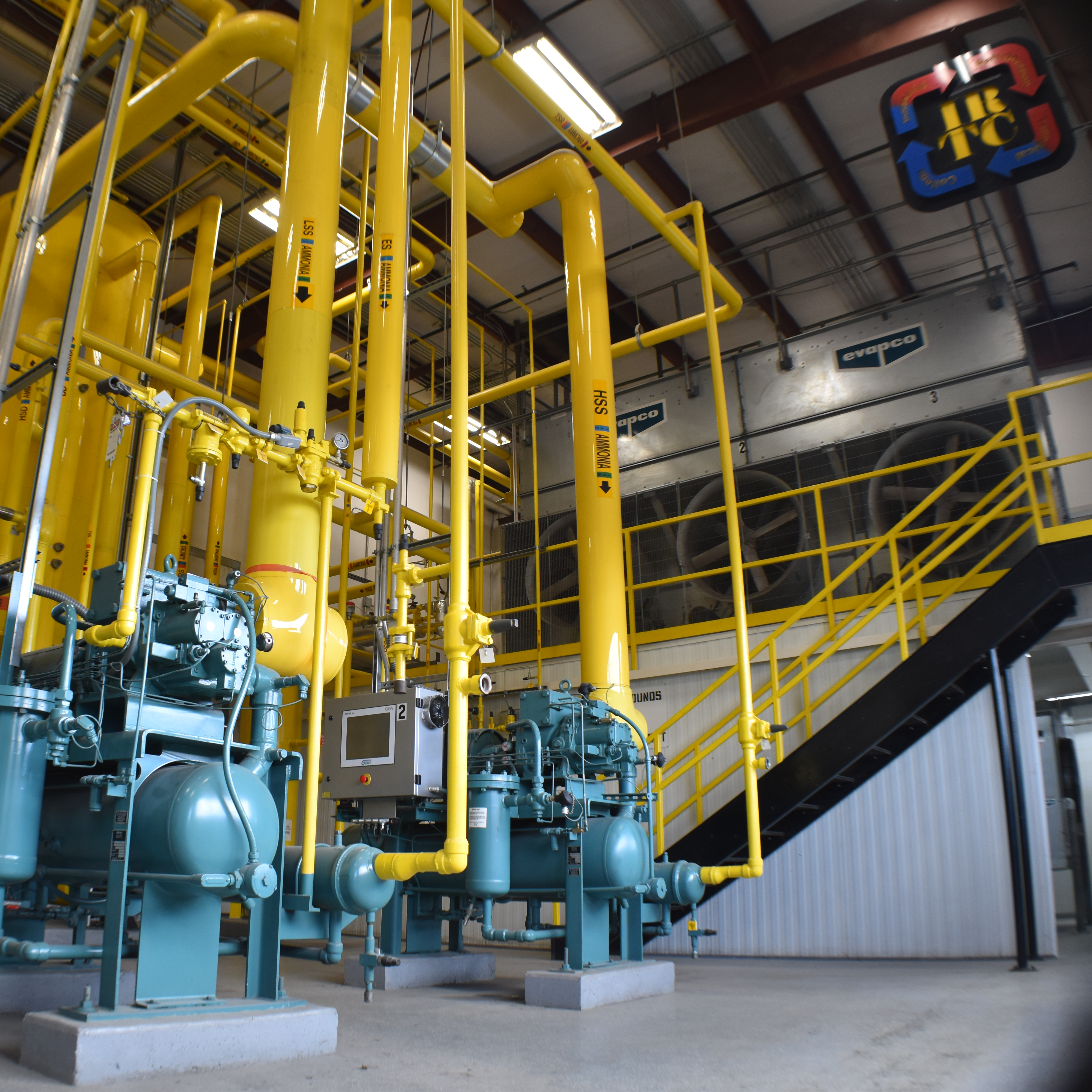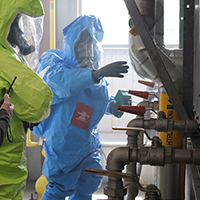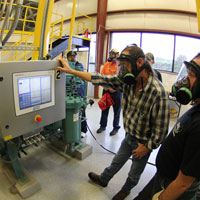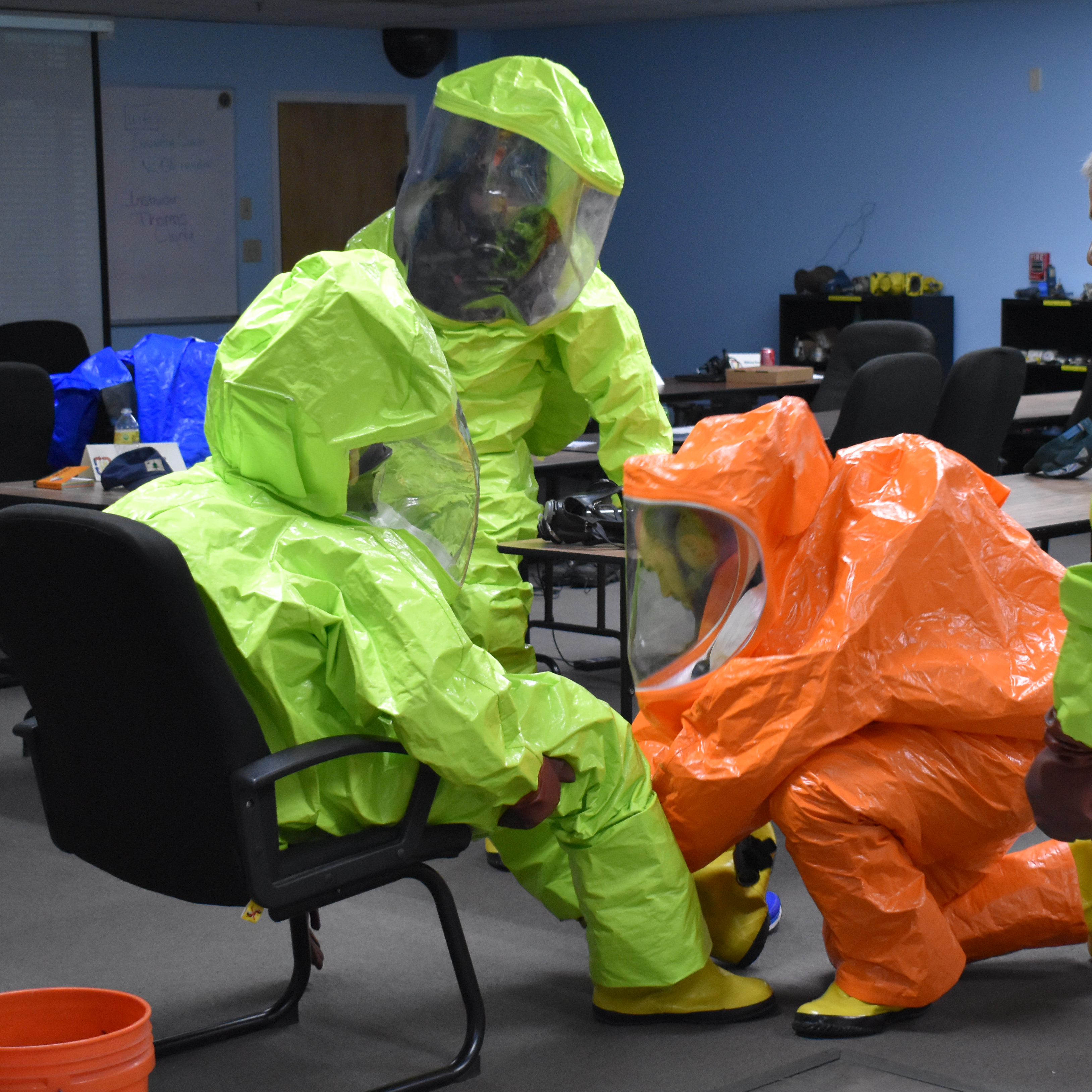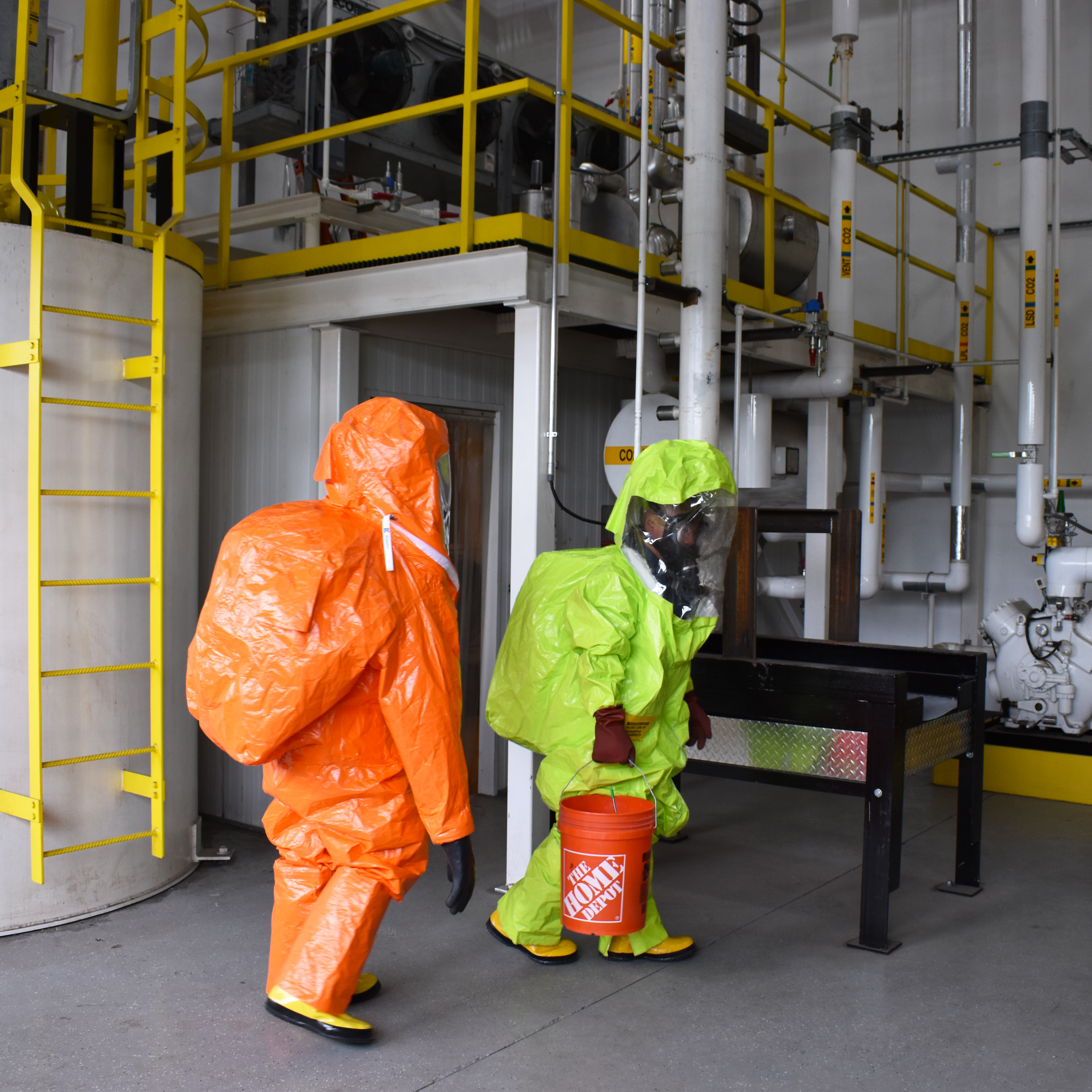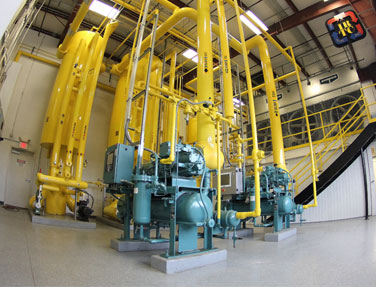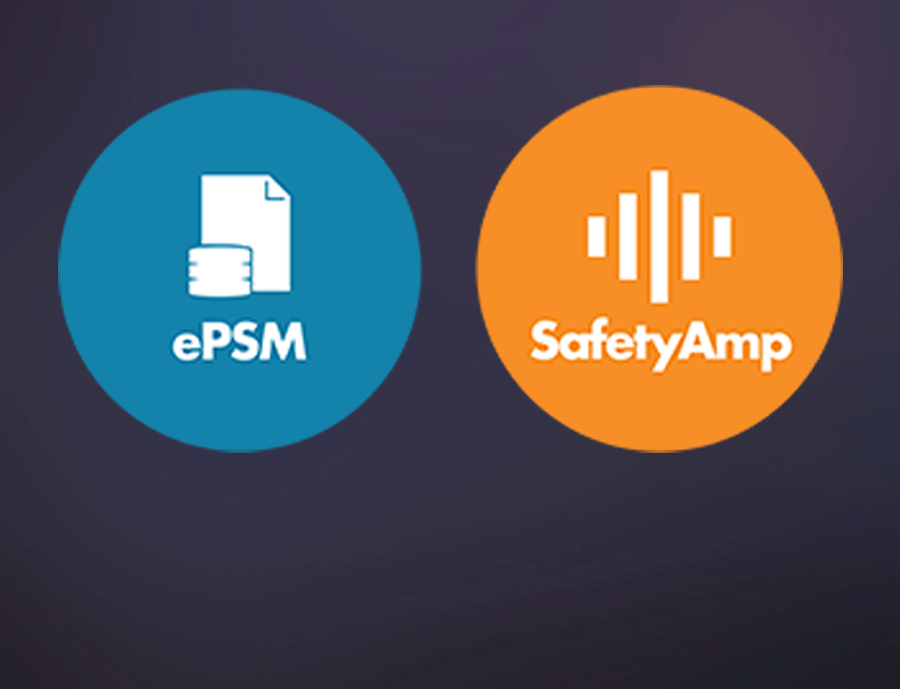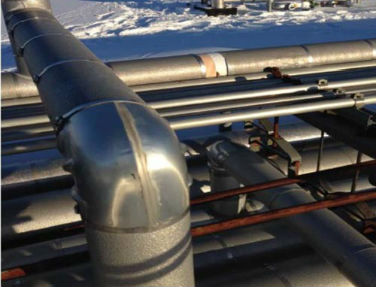A Day in the Training Lab
A Safe Environment
Ammonia safety is a critical part of an ammonia operator’s role so ammonia safety training is emphasized in the ammonia training lab. Ammonia safety training includes, but is not limited to, the properties of ammonia, ammonia SDS, PPE training, oil pot draining, emergency cutouts, and equipment pump-out. In addition to ammonia safety, electrical safety is practiced and stressed in the training center.
Typical Tasks
A day in the ammonia training lab may involve draining oil pots, operating compressors, inspecting condensers, setting hand expansion valves, defrosting evaporators, and challenging ammonia sensors. Another day in the ammonia training lab may include controls, electrical components, sensors, and wiring as modern ammonia systems are rarely run manually and the industrial refrigeration operator should have this electrical knowledge.
Something to think about:
Let's briefly discuss oil pot draining. Draining an oil pot is a common responsibility of an ammonia operator; however, the proper practices and procedures should be followed to perform the task safely and efficiently. Do you and your operators know the answers to the following questions?
- Why is oil drained from an ammonia refrigeration system?
- In what locations should oil draining take place?
- Should a spring valve be installed?
- What is the appropriate PPE for draining an oil pot?
- Should we be concerned about hydrostatic expansion?
If the answer is no, consider taking our course, where these questions and more will be answered in-depth during our lab training course. In addition to physically draining an oil pot, the operator will gain a detailed understanding of the entire process and better retain the knowledge. This includes proper PPE selection and use, correct operating procedures, and safe valve operation.

